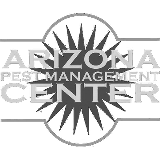What's Coming This Season
The University of Arizona Cooperative Extension in Yuma is launching an exciting new research trial that could reshape how we approach weed management and lettuce thinning in specialty agriculture. With funding from the Arizona Iceberg Lettuce Research Council (AILRC), we're evaluating the performance of robotic weeding and thinning technologies, and the results could be significant for growers across the desert Southwest.
This isn't just another field trial. This is about understanding whether precision robotics can deliver on their promise to reduce labor demands, improve crop quality, and maintain the same level of weed control that growers have come to expect from traditional hand weeding and cultivation.
The Trial Design
Our research team is comparing the performance of robotic weeding and thinning systems directly against conventional hand weeding and thinning, the industry standard that growers have relied on for decades. This head-to-head comparison will give us real data on how these technologies perform under actual field conditions in our region.
The trial is examining multiple critical factors. We're looking at weed control efficacy across different weed species, because not all weeds respond the same way to mechanical and precision spray control, and that matters. We're evaluating crop safety and plant vigor to make sure the technology doesn't compromise the crop itself. And we're assessing the practical logistics of deployment, which is just as important as the technology's performance on paper.
Why This Matters
Robotic weeding and thinning technology represents a significant shift in how we can approach labor-intensive operations. For specialty crops like lettuce and other Cole crops, hand weeding and thinning have traditionally been necessary to achieve the precision and quality standards the market demands. But labor availability, consistency, and cost are ongoing challenges for growers.
If robotic systems can deliver comparable or superior results while addressing some of these challenges, that changes the economics of production. It also opens conversations about how precision technology can reduce our reliance on certain inputs while improving outcomes.
Connected to the Desert Difference Conference
This trial is running in conjunction with The University of Arizona’s Yuma Center of Excellence for Desert Agriculture (YCEDA), Cooperative Extension, and the Yuma Agricultural Center, in partnership with Western Growers, proudly present The Desert Difference Conference. This important regional event brings together growers, researchers, industry partners, and technology innovators. The timing allows us to share preliminary insights and connect with stakeholders who are directly interested in these innovations.
The conference provides a platform for real conversations about what's working, what's not, and what growers actually need from technology. That kind of direct feedback shapes how we interpret the data and what recommendations we make going forward.
The Research Process
Over the coming weeks and months, our team will be collecting detailed data from multiple technologies. We'll be documenting weed control performance, evaluating crop responses, and assessing the practical aspects of deployment. The goal is to provide growers with evidence-based information they can use to make informed decisions about whether robotic systems make sense for their operations.
This is rigorous work. We're not just looking at whether the robots work in ideal conditions. We're stress-testing them under real-world constraints, including diverse weed species.
Stay Tuned
We'll be sharing results from this trial as the season progresses. This research has the potential to contribute meaningful insights to the conversation about precision agriculture, labor challenges, and the future of specialty crop production in our region.





